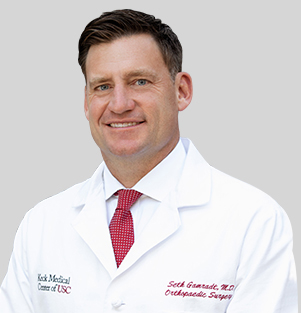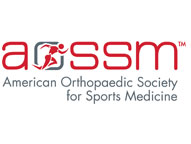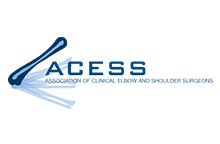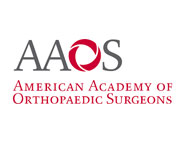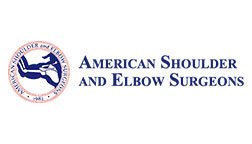Overview
The acromioclavicular (AC) joint in the shoulder represents the joint between the clavicle and the scapula. The shoulder is made up of three bones: the scapula (shoulder blade), the humerus (upper arm bone), and the clavicle (collarbone). The part of the scapula that makes up the roof of the shoulder and connects with the clavicle is called the acromion. The joint where the acromion and the clavicle join is the AC joint.
Despite the limited mobility of this joint, it is a common spot for osteoarthritis to develop due to high strain on the joint in weightlifters and others who repeatedly lift heavy amounts of weight overhead. In addition, the degeneration can also be caused by trauma or separation of the AC joint.
Degeneration of the AC joint is termed osteoarthritis which means that the gliding surface of the joint has been worn out (articular cartilage). The resulting wear and tear on the joint is painful and can cause difficulty using the shoulder for everyday activities and heavy lifting.

Figure 1A
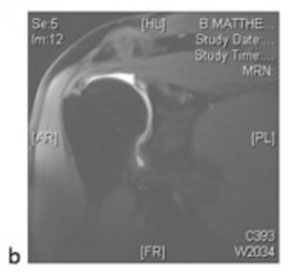
Figure 1B
Symptoms
AC joint osteoarthritis usually causes pain and tenderness in the front of the shoulder around the joint. The pain is often worse when the arm is brought across the chest, since this motion compresses the joint. If the joint has been separated or traumatized in the past, there may be a bigger bump or prominence over the joint on the affected shoulder when compared to the unaffected shoulder. The joint may also click or pop as it moves.
Diagnosis
Diagnosis of AC joint osteoarthritis is usually made by physical examination. The AC joint is usually tender to touch (direct palpation). A key finding is pain as the joint is compressed when the joint is brought across the body.
AC joint osteoarthritis can also co-exist with impingement syndrome (pressure on the rotator cuff from a bone spur from the acromion or a bone spur from the undersurface of the AC joint itself.
X-rays of the AC joint will be taken. x-rays can show narrowing of the joint and bone spurs around the joint, which are signs of degeneration. An MRI will confirm the AC joint osteoarthritis and can diagnose other concomitant conditions of the shoulder such as impingement syndrome and rotator cuff tears.
Figure 1A. X-rays demonstrating acromioclavicular joint (AC joint) osteoarthritis.
Figure 1B. MRI confirming both impingement from an acromial spur and severe acromioclavicular joint osteoarthritis.
Treatment
Nonsurgical Treatment
Initial treatment for AC joint osteoarthritis usually consists of rest and anti-inflammatory medications. Physical therapy can strengthen the muscles across the joint and can sometimes improve symptoms of AC joint osteoarthritis. Lastly cortisone injections (steroid) can relieve symptoms as well. If nonsurgical measures fail to relieve your pain, your doctor may recommend surgery.
Surgical Treatment
If nonsurgical treatment is ineffective for 3-6 months, surgery may be recommended. Surgery is performed arthroscopically. A camera is inserted into the shoulder joint, and the end of the clavicle joint is resected (about 5mm of the very end of the bone is removed). As your body heals, the joint is replaced by scar tissue. In contrast to the arthritic joint, the new AC joint has no contact between the bones and therefore is not painful.
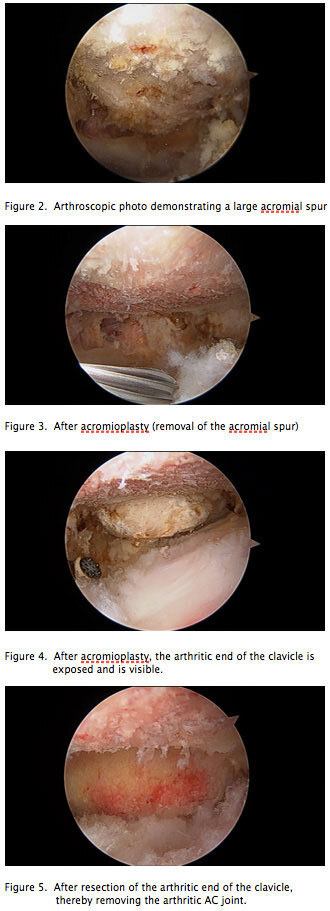
Figure 1A
What to Expect
The AC joint resection surgery (also called a Mumford procedure) is performed arthroscopically, using small incisions with a camera. The surgery is often performed in conjunction with other shoulder procedures including subacromial decompression with acromioplasty and/or rotator cuff repair.
A sling is worn for 3-5 days to protect the shoulder after the initial pain from surgery. If no repair was performed, range of motion exercises commence immediately and continue for 6 weeks. This range of motion physical therapy is then followed by 6 weeks of strengthening therapy. The three months of rehabilitation usually results in full range of motion and little if any pain in the shoulder.
